Resources
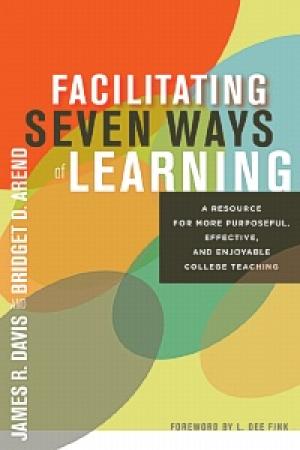
Click Here for Book Review Abstract: For teachers in higher education who haven’t been able to catch up with developments in teaching and learning, James Davis and Bridget Arend offer an introduction that focuses on seven coherent and proven evidence-based strategies. The underlying rationale is to provide a framework to match teaching goals to distinct ways of learning, based on well-established theories of learning. The authors present approaches that readers can readily and safely experiment with to achieve desired learning outcomes, and build confidence in changing their methods of teaching. Research on learning clearly demonstrates that learning is not one thing, but many. The learning associated with developing a skill is different from the learning associated with understanding and remembering information, which in turn is different from thinking critically and creatively, solving problems, making decisions, or change paradigms in the light of evidence. Differing outcomes involve different ways of learning and teaching strategies. The authors provide the reader with a conceptual approach for selecting appropriate teaching strategies for different types of content, and for achieving specific learning objectives. They demonstrate through examples how a focused and purposeful selection of activities improves student performance, and in the process makes for a more effective and satisfying teaching experience. The core of the book presents a chapter on each of the seven ways of learning. Each chapter offers a full description of the process, illustrates its application with examples from different academic fields and types of institutions, clearly describes the teacher’s facilitation role, and covers assessment and online use. The seven ways of learning are: Behavioral Learning; Cognitive Learning; Learning through Inquiry; Learning with Mental Models; Learning through Groups and Teams; Learning through Virtual Realities; and Experiential Learning. Along the way, the authors provide the reader with a basis for evaluating other approaches to teaching and other learning methodologies so that she or he can confidently go beyond the “seven ways” to adapt or adopt further strategies. This is the ideal companion for teachers who are beginning to explore new ways of teaching, and want to do some serious independent thinking about learning. The book can also be used to prepare graduate students for teaching, and will be welcomed by centers for teaching and learning to help continuing faculty re-examine a particular aspect of their teaching. (From the Publisher)
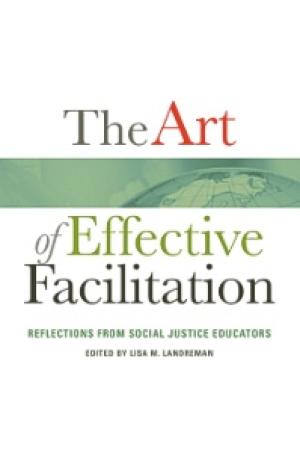
Click Here for Book Review Abstract: How can I apply learning and social justice theory to become a better facilitator? Should I prepare differently for workshops around specific identities? How do I effectively respond when things aren’t going as planned? This book is intended for the increasing number of faculty and student affairs administrators – at whatever their level of experience -- who are being are asked to become social justice educators to prepare students to live successfully within, and contribute to, an equitable multicultural society. It will enable facilitators to create programs that go beyond superficial discussion of the issues to fundamentally address the structural and cultural causes of inequity, and provide students with the knowledge and skills to work for a more just society. Beyond theory, design, techniques and advice on practice, the book concludes with a section on supporting student social action. The authors illuminate the art and complexity of facilitation, describe multiple approaches, and discuss the necessary and ongoing reflection process. What sets this book apart is how the authors illustrate these practices through personal narratives of challenges encountered, and by admitting to their struggles and mistakes. They emphasize the need to prepare by taking into account such considerations as the developmental readiness of the participants, and the particular issues and historical context of the campus, before designing and facilitating a social justice training or selecting specific exercises. They pay particular attention to the struggle to teach the goals of social justice education in a language that can be embraced by the general public, and to connect its structural and contextual analyses to real issues inside and outside the classroom. The book is informed by the recognition that “the magic is almost never in the exercise or the handout but, instead, is in the facilitation”; and by the authors’ commitment to help educators identify and analyze dehumanizing processes on their campuses and in society at large, reflect on their own socialization, and engage in proactive strategies to dismantle oppression. (From the Publisher)
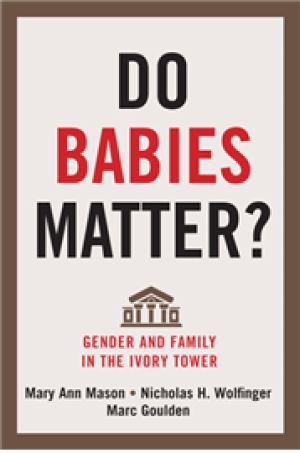
Click Here for Book Review Abstract: The new generation of scholars differs in many ways from its predecessor of just a few decades ago. Academia once consisted largely of men in traditional single-earner families. Today, men and women fill the doctoral student ranks in nearly equal numbers and most will experience both the benefits and challenges of living in dual-income households. This generation also has new expectations and values, notably the desire for flexibility and balance between careers and other life goals. However, changes to the structure and culture of academia have not kept pace with young scholars’ desires for work-family balance. Do Babies Matter? is the first comprehensive examination of the relationship between family formation and the academic careers of men and women. The book begins with graduate students and postdoctoral fellows, moves on to early and mid-career years, and ends with retirement. Individual chapters examine graduate school, how recent PhD recipients get into the academic game, the tenure process, and life after tenure. The authors explore the family sacrifices women often have to make to get ahead in academia and consider how gender and family interact to affect promotion to full professor, salaries, and retirement. Concrete strategies are suggested for transforming the university into a family-friendly environment at every career stage. The book draws on over a decade of research using unprecedented data resources, including the Survey of Doctorate Recipients, a nationally representative panel survey of PhDs in America, and multiple surveys of faculty and graduate students at the ten-campus University of California system. (From the Publisher)
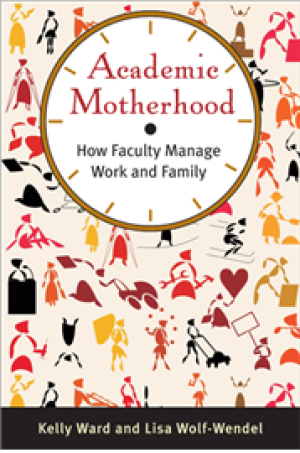
Academic Motherhood tells the story of over one hundred women who are both professors and mothers and examines how they navigated their professional lives at different career stages. Kelly Ward and Lisa Wolf-Wendel base their findings on a longitudinal study that asks how women faculty on the tenure track manage work and family in their early careers (pre-tenure) when their children are young (under the age of five), and then again in mid-career (post-tenure) when their children are older. The women studied work in a range of institutional settings—research universities, comprehensive universities, liberal arts colleges, and community colleges—and in a variety of disciplines, including the sciences, the humanities, and the social sciences. Much of the existing literature on balancing work and family presents a pessimistic view and offers cautionary tales of what to avoid and how to avoid it. In contrast, the goal of Academic Motherhood is to help tenure track faculty and the institutions at which they are employed “make it work.” Writing for administrators, prospective and current faculty as well as scholars, Ward and Wolf-Wendel bring an element of hope and optimism to the topic of work and family in academe. They provide insight and policy recommendations that support faculty with children and offer mechanisms for problem-solving at personal, departmental, institutional, and national levels. (From the Publisher)
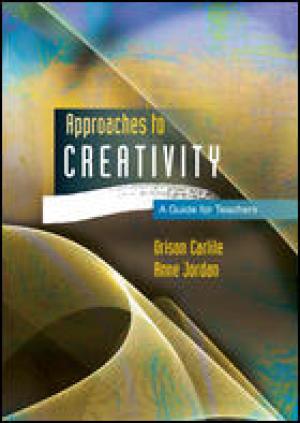
This book offers an accessible introduction and a comprehensive guide to a range of ideas on creativity in education. The book provides an overview of the major theories related to creativity and explores the implications for policy and practice. The popular topic of creativity has given rise to a large number of theoretical positions, sometimes contradictory or contested. This book clarifies and organises these approaches so that teachers understand where particular pedagogical and curricular practices originate and can develop them coherently. Topics covered include: Creativity in a social context Creativity and technology Creativity and curriculum planning Assessment and creativity Group creativity Managing creativity Tools of creativity The creative learner Creativity and cognition Creativity as expression Approaches to Creativity is an invaluable resource for those who wish to reflect on creativity and explore and engage in the modern discourse of education. It will be of value in teacher education, postgraduate studies, curriculum design and administration. (From the Publisher)
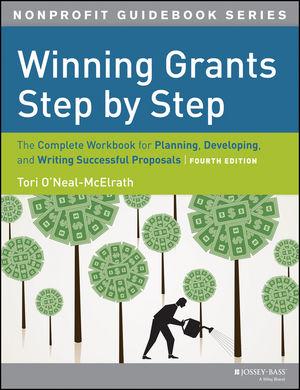
The hallmark feature of Winning Grants is its accessible, step-by-step approach to the grant-writing process, which will not change with the exception of a reordering of the steps for clarity and flow. It is within this established and very successful step-by-step framework that this new edition will address significant changes in the grantseeking landscape since the 3rd edition published in 2008. The book features new material on the role of technology (more foundations of all sizes going paperless and conducting application submissions via websites and/or specific forms online), the explosive growth and proliferation of donor advised funds (DAF's) the differences in approach between new projects and existing/continuing projects, and techniques for submitting grant proposals to larger foundations versus smaller foundations with little or no staff. In addition: A new section will be added on the role of new media and online social networks in the grantseeking and grantmaking process. A new section will be added on public funding, which has never been explored in previous editions but is a constant source of questions. The budget chapter will be overhauled, simplified and updated with current thinking and best practices A companion website will replace the CDROM and house all pertinent worksheets, examples and resources The Glossary and Terms of Use will be completely refreshed New proposal examples will be added including: general operating, new project, existing project, collaborative proposals. (From the Publisher)
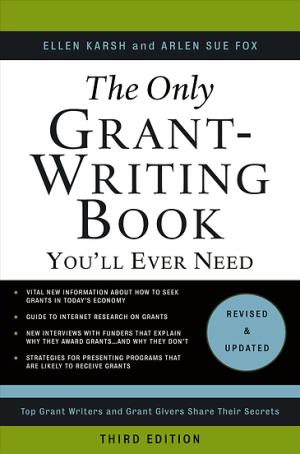
This book is designed to help nonprofit organizations craft proposals for grants from foundations, companies, and government agencies. Ellen Karsh, a writer and former director of the Mayor's Office of Grants Administration, in New York, and Arlen Sue Fox, associate executive director for development at Sunnyside Community Services, also in New York, significantly update this edition from 2005 by including interviews with grant makers about how the current economic crisis is affecting their giving and how grant seekers can improve their chances of garnering support. The book includes a proposal checklist, a glossary of terms, sample grant forms, and a list of Web sites that provide information on grants offered by foundations, corporations, and the government. —from the Chronicle of Philanthropy (From the Publisher)
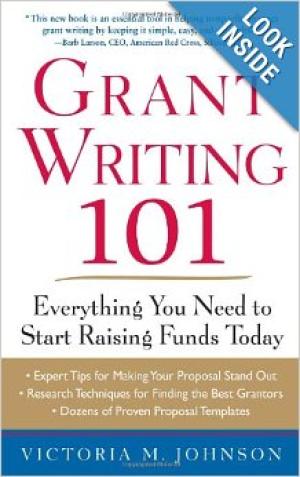
This book offers you no-frills essentials and down-and-dirty tricks for producing great grant-writing results. (From the Publisher)
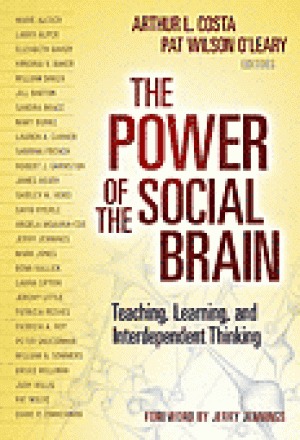
Click Here for Book Review Abstract: Research has demonstrated that cooperative learning is one of the most highly effective teaching strategies, while new findings from neuroscience confirm the brain’s natural inclination to think socially. But simply putting students in a group is not enough. The authors of The Power of the Social Brain see “interdependent thinking” as the missing piece of the collaborative puzzle. This authoritative book provides practical strategies, informed by research from neuroscience and education, to help groups function more effectively and thoughtfully. By adding the “cognitive dimension” to cooperative learning, this book will help readers apply new protocols and strategies for more successful, affirming, and productive group work in classrooms and professional educational learning communities. Book Features: Fresh parallel insights on interdependent thinking from the arts, architecture, business, the community, and sports. Approaches for leveraging cooperative learning to improve thinking, problem solving, performance, and mutual support across a wide range of settings, including classrooms, teams, and professional learning communities. Instructional strategies from experienced classroom teachers for teaching young people to think and work interdependently at home and at school. Reflective questions at the end of each section to help guide thinking, stimulate conversation, and catalyze change within a learning community or classroom. (From the Publisher)

If leaders are made, not born, what is the best way to teach the skills they need to be effective? Today's complex times require a new kind of leadership--one that encompasses a mind-set and capabilities that can't necessarily be taught by conventional methods. In this unique leadership book, Sharon Daloz Parks invites readers to step into the classroom of Harvard leadership virtuoso Ronald Heifetz and his colleagues to understand this dynamic type of leadership and experience a corresponding mode of learning called "case in point." Unlike traditional teaching approaches that analyze the experiences of past leaders, case in point uses individuals' own experiences--and the classroom environment itself--as a crucible for learning. This bold approach enables emerging leaders to work actively through the complex demands of today's workplace and build their skills as they discover theory in practice. Through an engaging, you-are-there writing style, Parks outlines essential features of this approach that can be applied across a range of settings. In the process, Leadership Can Be Taught reveals how we can learn, practice, and teach the art of leadership in more skilled, effective, and inspired forms. Sharon Daloz Parks is director of leadership for the New Commons--an initiative of the Whidbey Institute in Clinton, WA. She has held faculty and research positions at the Harvard Divinity School, Harvard Business School, and the Kennedy School of Government at Harvard University. (From the Publisher)